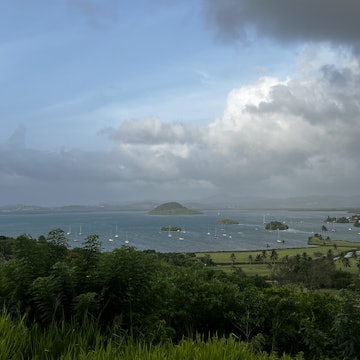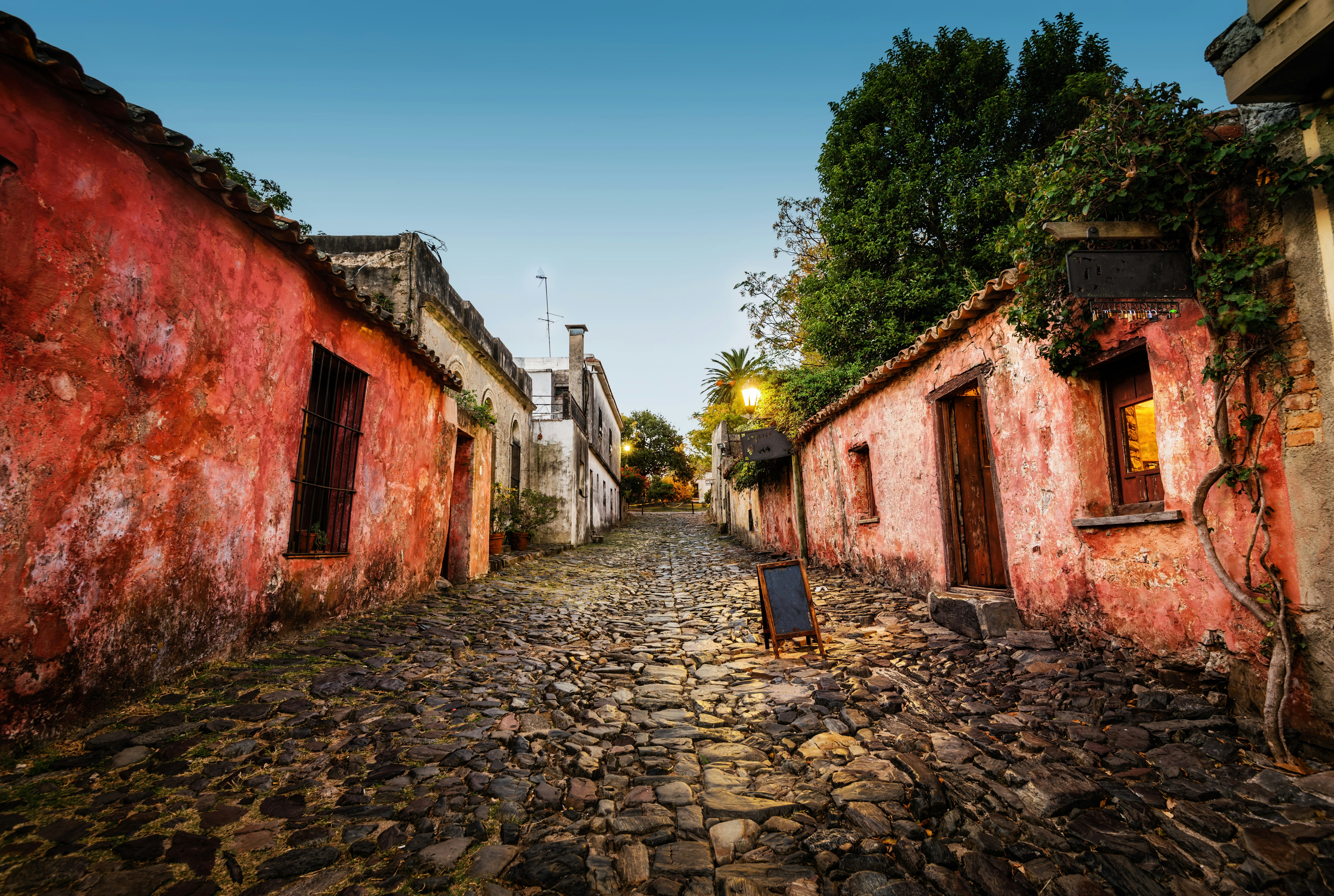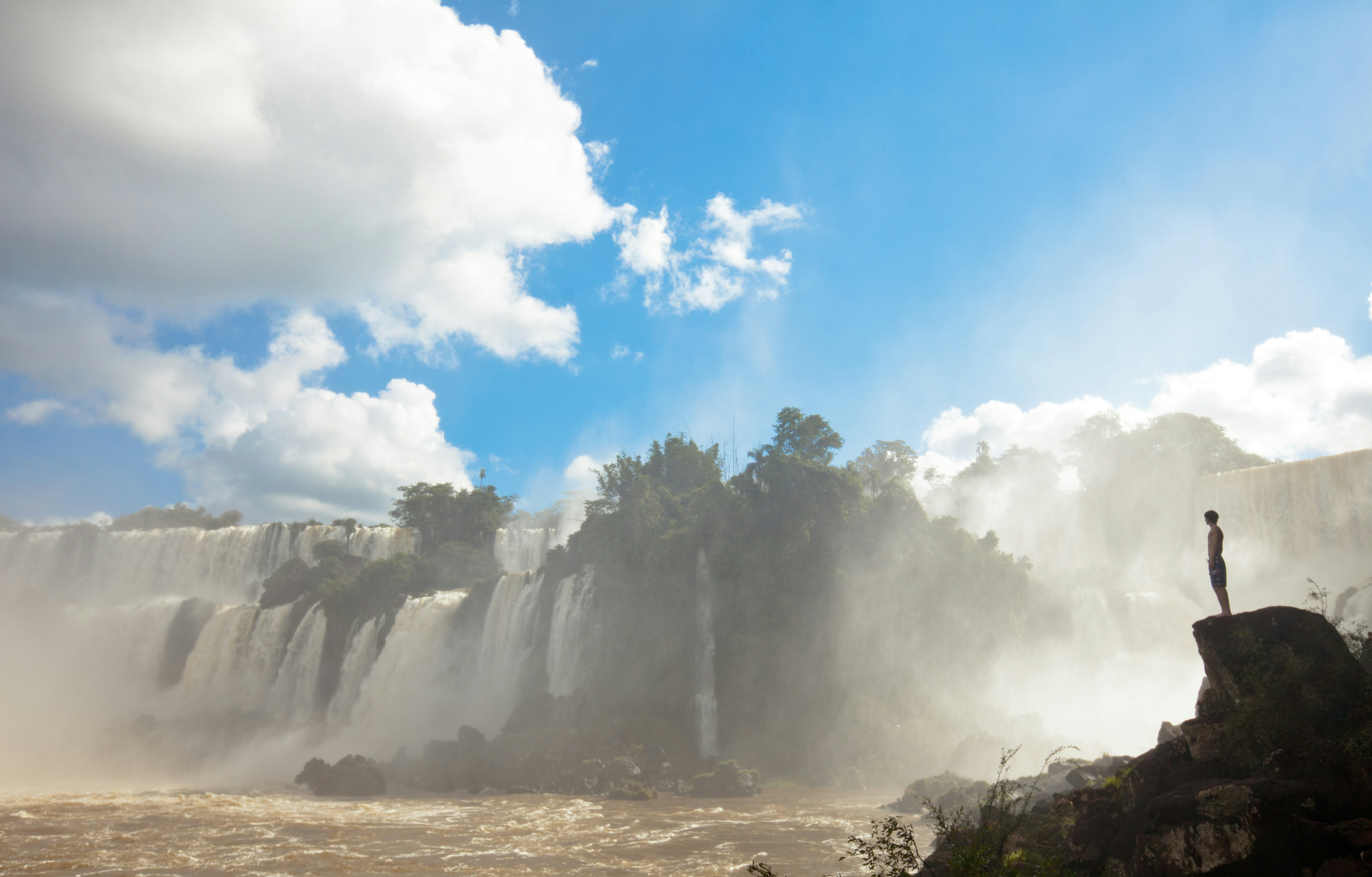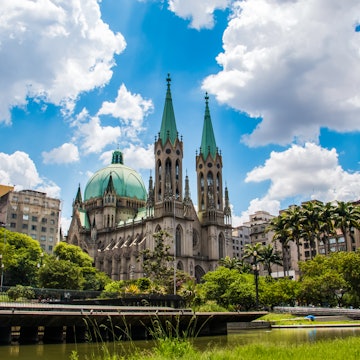

Get beyond the sprawl of Buenos Aires to find traditional gaucho culture alive and well in San Antonio de Areco. Shutterstock
Buenos Aires has so much going on that you could spend a lifetime trying – and failing – to experience it all. It’s an intoxicating place that pulls you in and holds on with a magnetic grip. And that’s not all: within the space of a day trip, you can taste more of what Argentina and its neighbors have to offer.
These are our five favorite day trips from Buenos Aires.

1. Explore the Delta by boat or kayak from Tigre
Travel time: 50 minutes by car, 1 hour by train, 2 hours by boat
The town of Tigre is the gateway to the Paraná Delta, a vast network of muddy waterways and lush green islands that can be accessed only by boat or kayak. Islanders live in stilt houses reached via rickety wooden jetties, where lanchas colectivas (public transport boats) stop on request. The best way to explore the Delta is to rent a kayak or take a tour, and enjoy a few blissful hours paddling under overhanging branches to a soundtrack of birdsong and passing motorboats.
When hunger strikes, pull up at the jetty of a low-key parrilla (a restaurant specializing in grilled food). In Tigre town (and accessible on foot as well as by boat) is the Museo de Arte, a lovely belle-époque building that now houses the work of some of Argentina’s most celebrated artists.
How to get to Tigre from Buenos Aires: Tigre is a 50-minute drive from Buenos Aires or an inexpensive one-hour train trip from Retiro station. The most scenic way to reach Tigre is by boat from Puerto Madero (two hours).

2. Get to know gaucho culture in San Antonio de Areco
Travel time: 1.5 hours by car, 2 hours by bus
The prosperous pampas town of San Antonio de Areco is the perfect place to channel your inner gaucho. (These nomadic, cowboy-like figures are known for their horse-riding skills and for being the heroes of Argentine folk tales.) These days, the gaucho’s modern-day descendants can be spotted in their boinas (traditional berets) on horseback around Areco’s elegant town plaza or in one of its dusty bars, such as the Boliche de Bessonart.
The best place to try horseback riding and see displays of gaucho horsemanship is on a day visit to an estancia (ranch); Estancia el Ombú de Areco is a good option. If you want to learn more about gaucho history and folklore, don’t miss the Museo Gauchesco Ricardo Güiraldes.
The highlight of the year is November’s Fiesta de la Tradición, during which gauchos gather to compete with daring displays of horsemanship. Live folk music and dancing continues late into the night.
How to get to San Antonio de Areco from Buenos Aires: From Buenos Aires, San Antonio de Areco is a 1½-hour journey by car and around 2 hours by bus. Estancia day visits often include private transport to and from Buenos Aires.

3. Wander the cobbled streets of Colonia del Sacramento’s Barrio Histórico
Travel time: 1 hour and 15 minutes by ferry
It’s easy to see why the pretty Uruguayan town of Colonia is such a popular destination for day trippers from Buenos Aires. Just 30 miles from the Argentine capital across the on Río de la Plata, Colonia has a relaxed pace that stands in stark contrast to BA’s frenetic energy.
You can explore most of Colonia’s Barrio Histórico (historic neighborhood) in just a few hours. Allow time to linger for photographs in various picturesque settings, such as the cobbled 18th-century Calle de los Suspiros and the Faro, a 19th-century working lighthouse.
A single ticket grants you entry to the town’s eight small museums. Rent a bike to cycle as far as the former bullring at the Real de San Carlos to explore the beaches on the outskirts of town. For lunch, stop at Los Farolitos for a chivito, a classic Uruguayan sandwich filled with grilled beef steak, cheese, bacon, tomatoes, olives and mayonnaise.
How to get to Colonia del Sacramento from Buenos Aires: Colonia is an easy day trip from Buenos Aires by ferry, operated by Buquebus and Colonia Express. Don’t forget your passport.

4. See the awe-inspiring Iguazú Falls
Travel time: 1 hour and 50 minutes by plane
One of the world’s most awe-inspiring natural wonders, Cataratas del Iguazú (Iguazú Falls) is a chain of hundreds of waterfalls extending over 2 miles. Even if your time in Buenos Aires is limited, it’s worth trying to squeeze in a trip to take in this bucket-list natural wonder.
The falls are located at the border between Argentina and Brazil and can be viewed from both sides. The park on the Argentine side offers rainforest trails, boat rides and the chance to get close enough to feel the falls’ spray, while the Brazilian side is better for panoramic views (if you want to visit both sides, first check visa requirements for entering Brazil).
It’s possible to visit Igauzú on a day trip from Buenos Aires, though staying overnight in Puerto Iguazú will give you more time at the falls.
How to get to Iguazú Falls from Buenos Aires: Frequent flights operate throughout the day between Aeroparque Jorge Newbery and Puerto Iguazú. The drive would take around 16 hours, the bus 18 hours.

5. Experience Carnaval celebrations in Montevideo
Travel time: 2 hours and 15 minutes by ferry
Montevideo hosts a late-summer Carnaval to rival Rio de Janeiro’s. For the month of February, Uruguay’s capital pulses to the distinctive rhythms of candombe (Afro-Uruguayan drumming) and hosts performances of a form of musical theater known as murga.
The carnival highlight is the early-February Desfile de la Llamadas, a two-night parade of comparsas (neighborhood carnival groups), which compete to put on the most electrifying displays of dancing and drumming. Catch the comparsas rehearsing in the streets of Palermo and Parque Rodó in the months leading up to Carnaval, and find out more about the history of the festival at Museo del Carnaval.
The timing of the ferry crossings between Buenos Aires and Montevideo means it’s preferable to spend at least one night in the Uruguayan capital, which is no hardship because the city has plenty to do and see.
How to get to Montevideo from Buenos Aires: The easiest way to get to Montevideo from Buenos Aires is on the direct ferry; combined ferry and bus tickets via Colonia (four hours) are usually cheaper. It’s possible to drive via Gualeguaychú, but the journey takes around 8 hours.
















